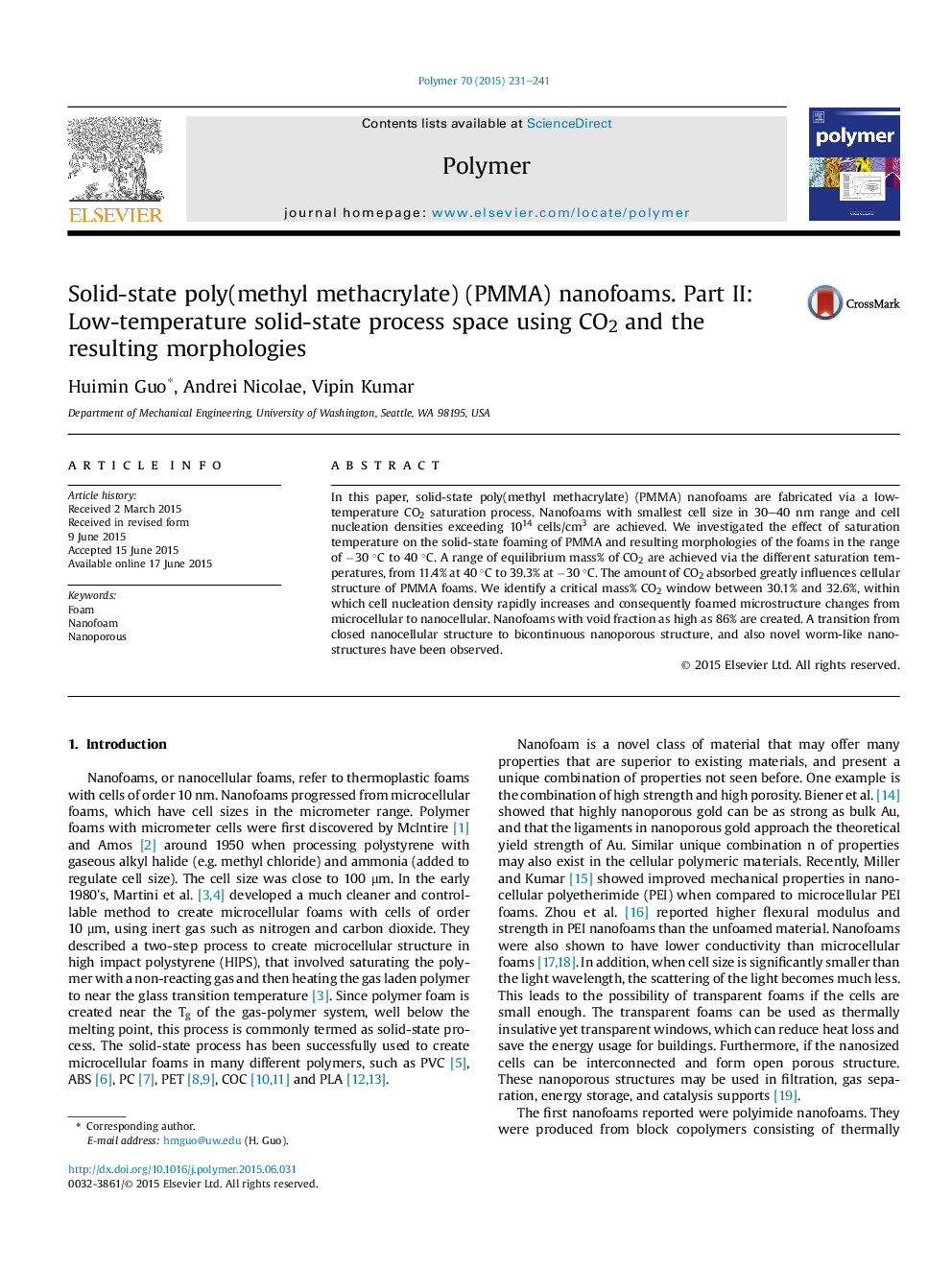| Article ID | Journal | Published Year | Pages | File Type |
|---|---|---|---|---|
| 5179948 | Polymer | 2015 | 11 Pages |
•PMMA nanofoams with cell size in 30–40 nm range are created for the first time.•The critical amount of CO2 needed for making PMMA nanofoams via the solid-state process is discovered.•We establish the processing conditions for making interconnected nanoporous structures in PMMA.
In this paper, solid-state poly(methyl methacrylate) (PMMA) nanofoams are fabricated via a low-temperature CO2 saturation process. Nanofoams with smallest cell size in 30–40 nm range and cell nucleation densities exceeding 1014 cells/cm3 are achieved. We investigated the effect of saturation temperature on the solid-state foaming of PMMA and resulting morphologies of the foams in the range of −30 °C to 40 °C. A range of equilibrium mass% of CO2 are achieved via the different saturation temperatures, from 11.4% at 40 °C to 39.3% at −30 °C. The amount of CO2 absorbed greatly influences cellular structure of PMMA foams. We identify a critical mass% CO2 window between 30.1% and 32.6%, within which cell nucleation density rapidly increases and consequently foamed microstructure changes from microcellular to nanocellular. Nanofoams with void fraction as high as 86% are created. A transition from closed nanocellular structure to bicontinuous nanoporous structure, and also novel worm-like nanostructures have been observed.
Graphical abstractFigure optionsDownload full-size imageDownload high-quality image (168 K)Download as PowerPoint slide
